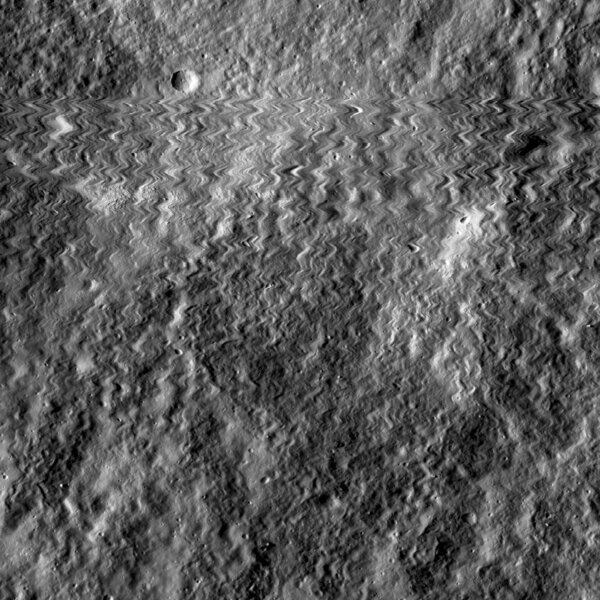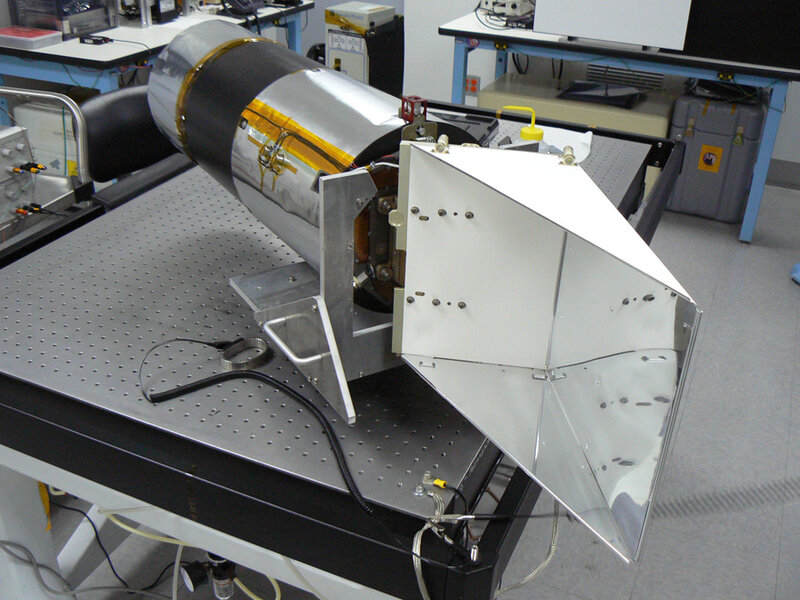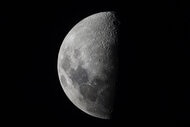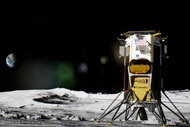Create a free profile to get unlimited access to exclusive videos, sweepstakes, and more!
In space, no one can hear when you're hit by a meteoroid. Except that one time when LRO was hit.
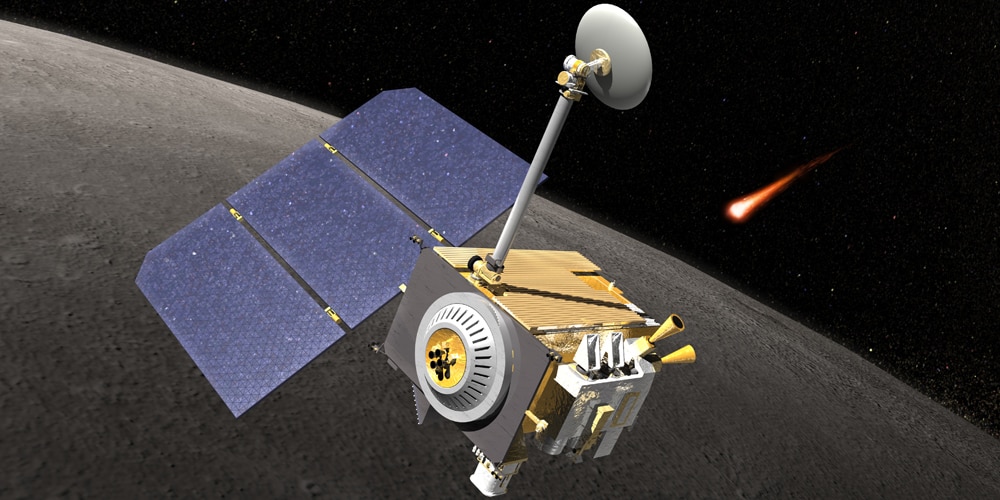
In every single black-and-white scifi movie made in the 1950s involving space travel, at some point in the flick Our Heroes are menaced by a “meteor”. Technically it’s actually a meteoroid, since it’s out in space (the meteor is actually the bright flash of light we see when it burns up in our atmosphere). Usually depicted as a lumpy rock (sometimes with sparks shooting off, my favorite), it appears on the viewscreen, someone yells something (generally the brilliant, “Meteor shower!” line), and then they hit the retrorockets or whatever and barely dodge out of the way in time.
It’s pretty silly. But the thing is, it happens in real life too: On October 13, 2014, the Lunar Reconnaissance Orbiter got hit by a piece of interplanetary debris! And being an uncrewed robotic probe in orbit around the Moon with no way of defending itself (or taking evasive action), it indeed got whacked.
It was in the middle of taking an image of the Moon, and it’s pretty obvious when you see it:
Ouch. The LRO Camera is actually three cameras: One that’s wide angle, and two that are narrow angle. Apparently, one of the narrow angle cameras got hit, because the other two cameras don’t show anything amiss.
The Narrow Angle Camera (NAC) uses what’s called a push broom technique to take images. It has a single row of 5064 light-sensitive pixels, so if it just sat there and took a picture it would be a single line 5064 pixels long. But it’s orbiting the Moon, so the camera is moving (and oriented so that the row is perpendicular to the direction of motion). This is the clever bit: Each pixel on the camera sees a certain amount of landscape underneath it, roughly 0.5 meter on a side. So a single image would represent a swath lunar territory 0.5 meters by 2532 meters across. But a moment later the camera has moved, so if it takes another picture, then another, it can build up a two-dimension image one row at a time. This is actually a fairly common technique for space-based cameras; it’s easier to build and operate, reads out quickly, and uses less power (it’s also how a lot of desktop scanners works; that’s why the bar moves across the page it’s scanning).
The NAC was taking such a sweep when it got hit. The wavy pattern is due to the initial hit and then the resulting vibrations dying down. Eventually the vibrations stopped, though the lunar terrain in the image is so odd looking it’s hard to tell precisely where.
Modeling the vibrations, engineers determined that the meteoroid was likely just under a millimeter in width, and moving at a little over 4 kilometers per second. A high-speed rifle bullet travels about 1 km/sec, so that teeny piece of rock was moving. In fact, the energy of a projectile increases with the square of the velocity, so the impact was very close to like being hit by a bullet. Happily, it most likely impacted the radiator, a triangular assembly that helps cool the camera electronics by radiating heat into space. It’s not a sensitive part, so the damage wasn’t critical.
Here’s a cute trick: Astronomer Alex Parker measured the vibrations from the impact and converted them into a sound, which is, after all, a vibration in air. Here’s what it sounds like:
He says it sounds like SPANG to him, but SPONG sounds closer to me. Your kilometerage might vary.
Events like this are pretty rare, despite everything I learned from cheesy movies when I was a kid. Space is pretty big (that’s why we call it space), so even though there’s a lot of stuff out there, the odds of getting hit are low. Just in case, of course, the International Space Station has patch kits in strategic locations in case of small hits. You can’t be too safe when you’re in space.
Anyway, LRO survived the incident, and has been working just fine in the years since. It’s one of my favorite spacecraft, so I’m glad it made it. And now it has a cool (if very wee) scar to show off!
...and I wonder. Technically, a meteoroid becomes a meteorite when it hits the ground. So, what do we call this thing? I remember having a similar discussion with a friend years ago; what if a tiny meteoroid hits an airplane, say, and lands on a seat? Someone picks it up, the plane lands, and the person then has a potential small fortune in their pocket. But it’s not technically a meteorite! Pedants will go...ballistic.
